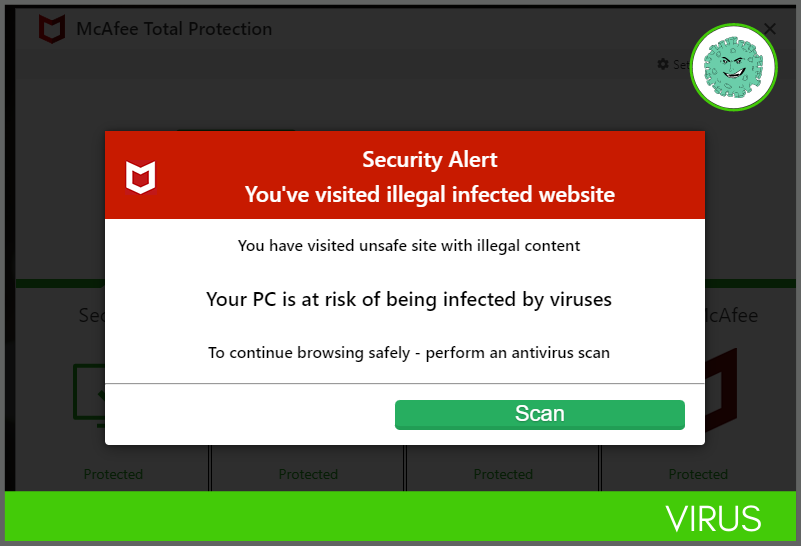-
About
- Friday, May 17, 6 p.m.
- Saturday, May 18, 11 a.m.
Commencement
Celebrating the Class of 2024
About
-
Academics
- Friday, May 17, 6 p.m.
- Saturday, May 18, 11 a.m.
Commencement
Celebrating the Class of 2024
Academics
-
Admission & Financial Aid
- Friday, May 17, 6 p.m.
- Saturday, May 18, 11 a.m.
Commencement
Celebrating the Class of 2024
Admission & Financial Aid
-
Student Life
- Friday, May 17, 6 p.m.
- Saturday, May 18, 11 a.m.
Commencement
Celebrating the Class of 2024
Student Life
- Athletics
An image of a letter being caught by a fishing pole with the text "Gone Phishing"

Why this looks valid
- Marist use McAfee Endpoint Protection for detecting and blocking malicious software
- Often community members have their own virus, malware, and website protection software that issue similar warnings
Why this is fraud
- Awkward sentence construction and grammatical errors are good indicators of malicious pop-ups
- It is very rare that website warnings come as pop-ups as many people use pop-up blockers
- Website warnings usually come from the browser itself - such as Firefox, Chrome, Safari, and Microsoft Edge - and never include a button to scan your machine
Additional notes
- How does this scam work? When you click the scan button, the pop-up message will say that viruses were found, and then show a phone number to call. The person on the other line will offer to login to your computer to find and remove the viruses. Eventually, they will say you need to pay for their services. Once you give them a credit card number, they will immediately make purchases. The attackers may also steal files and information from your computer.
- How did we get this screenshot? Yours truly, the writer of these announcements, opened a new browser tab and mistyped a website name. This is a common scam, where cyber criminals take control of website names that are very similar to valid websites. When someone makes a typo in visiting a site - which is very common - attackers put up malicious pop-ups, viruses, mawlare downloads, and all sorts of other malicious (and often inappropriate) material. Always check the site name you are visiting in the browser bar, to ensure that the website is the one you intended to visit.
- Always run anti-virus scans from the software tool itself. If you see this pop-up, close your browser entirely and then launch a scan from within the anti-virus software. This ensures you aren't running a fraudulent scan.
